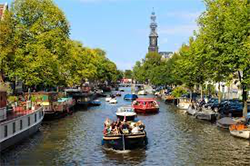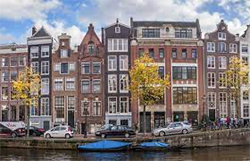Amsterdam: Dynamic Capital of the Netherlands
Amsterdam is the country's most populous city and one of two national capitals. 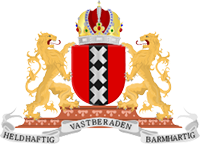
As with other cities in the Low Countries, the name comes from geography: a dam in the River Amstel, where the river flowed into the Zuiderzee, now called the Ijsselmeer. In the early days, the city was named Amstelerdam. 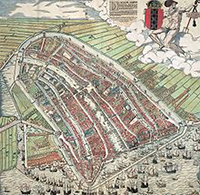
The settlement dates to the 1200s. In the first decade of the 1300s, Amsterdam won city rights, giving the residents to have self-jurisdiction. Also in this century grew trade with the cities of the Hanseatic League. Devastating fires gutted the city in the 15th Century; as a result, city fathers decreed that new buildings would be made of stone. Rare is the wooden house that remains from medieval times. 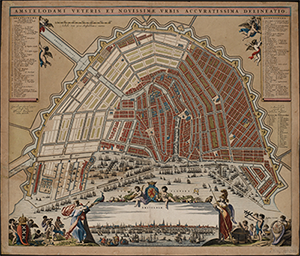 Amsterdam residents began digging the city's three main canals in 1613. The city grew in population and prestige. The Netherlands in the 16th and 17th Centuries were a hotbed of religious dissent, so much so that the very Catholic Holy Roman Empire sent troops to try to contain the spread of Protestantism. Amsterdam was home to a thriving community of Anabaptists (now known as Mennonites). Speaking out escalated from words to actions, and the result was armed conflict, eventually becoming the Eighty Years War. Amsterdam initially supported the Empire but soon switched sides. When Spanish troops sacked and then occupied nearby Antwerp, in 1585, Amsterdam became the center of Dutch commerce and trade. The city valued religious tolerance, and so refugees from the fighting made their way there, swelling the numbers of those living in and around Amsterdam. 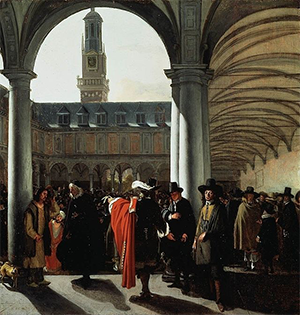
The Dutch Golden Age lasted from late in the 16th Century until late in the 17th Century. Dutch trade, powered primarily by a very large merchant navy, brought large amounts of money into the republic's coffers, the result of trading in new and exotic materials like coffee, silk, sugar, and (above all) spices. Dutch banking became a model for other European countries to follow. Dutch influence spread far and wide–in economic circles and in cultural circles, as the Dutch Republic became known as a haven for art and culture. Painters such as Johannes Vermeer and Rembrandt van Rijn became household names. All this time, an oligarch of regents ran things, speaking for the city in dealings with the States-General. A struggle for supremacy in overseas colonies and on the high seas themselves escalated into a series of wars with England, the first occurring in the 1650s. Bubonic plague struck Amsterdam in the 1660s, about the same time that the plague devastated London. Two more wars with England during these decades weakened both countries, and Amsterdam suffered as a result. Partly to help Dutch trade recover, the Netherlands at the turn of the 17th Century formed the Dutch East India Company and, later, the Dutch West India Company. Amsterdam by this time had become a mercantile powerhouse, and the city's large investments in the two companies paid off with further profits and influence. Spices from exotic lands sailed aboard Dutch ships back to the capital, there to be stored in large warehouses and then, eventually, sold on the European market. Helping to accelerate this commerce and trade were a series of canals around the city. Workers dug the three main canals (Herengracht, Keizersgracht, and Prinsengracht) in the 17th Century. The collapse of both India Companies coincided with the rise of Revolutionary France and then Napoleonic France. Emperor Napoleon Bonaparte in 1806 declared the existence of the Kingdom of Holland, ending the independence of Amsterdam and other Dutch cities. Rebellion ensued. After the wars ended, the Netherlands won the right to declare its own monarchy, and the recovery from devastation began. Amsterdam workers dug still more canals, connecting the city to the Rhine and to the North Sea during this time. The end of the 19th Century brought the Industrial Revolution, reversing a long decline and firing Amsterdam's growth once again. Between 1880 and 1920, the city oversaw the construction of the Stelling van Amsterdam, an 84-mile-long ring of fortifications around the city. Numbering 42 forts in all, the Defence Line of Amsterdam, as it's known in English, provides for the common defense by the very nature of the land on which the fortification network is built: The lowlands can be flooded in time of war. The advent of aerial warfare in World War I made the fortification strategy obsolete. 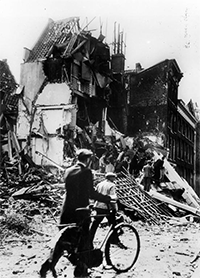
The city largely escaped the devastation of the Great War, although food shortages plagued residents. The Second World War, however, brought the blitzkrieg attacks of Nazi Germany, which Dutch troops could not withstand. The German occupation of the Netherlands lasted four long years, during which time one of Amsterdam's most famous residents was Anne Frank, author of the famous diary. Battered during the war, the city slowly recovered during the rest of the 20th Century. Immigration, which swelled the city's population at various times during the past few centuries, again drove expansion, as wartime devastation gave way to new growth in the city itself but also in the suburbs. Today, Amsterdam is a major tourist attraction, known for its tens of dozens of miles of canals, which dot the city. Early in the 21st Century, UNESCO named the city's three main canals part of the World Heritage List.
|
|
Social Studies for Kids
copyright 2002–2026
David White



